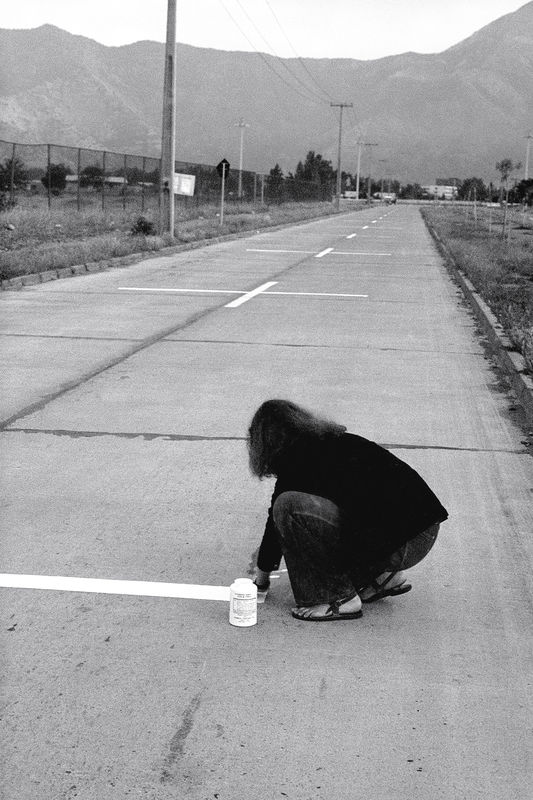
Lotty Rosenfeld, Artist
Una milla de cruces sobre el pavimento (A mile of crosses on the pavement)
, 1979
Artists in Chile responded to the military coup of 1973, which deposed the democratically elected socialist administration of Salvador Allende and ushered in a long period of violence and repression, with an aesthetics of dissent. Lotty Rosenfeld first presented her intervention Una milla de cruces sobre el pavimento on Avenida Manquehue in Santiago in 1979. The film that documents the intervention shows the artist measuring a piece of tape (or is it a bandage?) as wide as the pavement's dividing lines, then kneeling to adhere it to the street perpendicular to the lines that indicate the direction of traffic—an action that she repeats time and again. Through these measured and repeated movements, the intervention misaligned the signs that organize urban traffic, creating a space jarred by other meanings (the idea of addition and the image of the cross, with its associations of pain and death). The artist—a woman alone in the street—is the one who repeats the action. She reinstated and activated the ideas of rite, of sacrifice, and of exposure of the isolated body in an urban action in streets riddled with danger, thus attempting to induce a sense of confusion and upset the normalcy imposed by repressive power.
Con el golpe de Estado de 1973 que termina con el gobierno democrático socialista de Salvador Allende, Chile entra en un largo periodo de violencia y represión que fue contestado por una proliferación de propuestas estéticas disidentes. En 1979 Lotty Rosenfeld realiza por primera vez, en la Avenida Manquehue de Santiago de Chile, la intervención Una milla de cruces sobre el pavimento. En el film que registra el evento se sigue la acción repetida en la que la artista mide, se arrodilla y pega una cinta (o una venda) del mismo ancho que las líneas que dividen el pavimento. Con movimientos medidos y repetidos, convierte los signos que ordenan el tránsito urbano en un espacio dislocado por otros sentidos que introducen la imagen de la crucifixión y las nociones de suma, dolor y muerte. Es ella, una mujer, sola, en la calle, quien repite la acción. Repone y activa las ideas de rito, de sacrificio, de exposición del cuerpo aislado en una acción urbana, en las calles amenazadas por el peligro. Busca instalar así un desconcierto que altere la normalidad reglamentada por el poder represivo.


